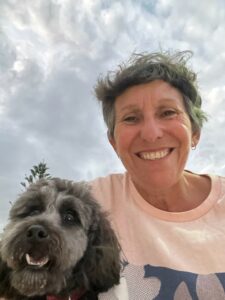The term ‘intersectionality’ has become increasingly popular and is now widely used among D&I professionals, advocates and in government policy. But how many of us know what this term means in a practical sense? Here, DCA’s Senior Advocacy and Government Relations Manager, Jacqueline Braw, unpacks her understanding of intersectionality and how it relates to her own intersecting identities.
My first memory of questioning my identity was as a child starting a new school when my father told me to tell my classmates that I was French. I’m not French. My parents were Polish/Jewish and immigrated to Australia in the 1950s. I learnt to hide aspects of my identity that did not translate well with the context in which I lived.
Today I count at least five ‘identities’ I hold, each one intersecting with the other, forming a compounded whole which, I guess, is ‘me’. There is a mass of literature on intersectionality, a term first coined by Kimberle Williams Crenshaw in 1989, talking about Black women’s unique and specific experiences of discrimination in the USA. Intersectionality is mentioned in policies, by activists, advocates and government, encouraging thinking beyond a single-dimensional approach to the experience of discrimination and marginalisation.
DCA refers to intersectionality as “how some people experience compounded discrimination due to multiple marginalising and interlinked characteristics”. The ‘and’ here is really, really important. Why, and what does this all mean in practice?
One way I have learnt to understand what intersectionality means in practice is by exploring my own identities and experiences over time, and in different contexts.
As a child, before that moment my father asked me to lie, I thought I was the most perfect and beautiful little girl in the world. That’s what my parents told me. But that lie troubled me as I didn’t understand why I shouldn’t tell my classmates where my parents came from. I quickly learnt about Australian culture back in the 1960s and 70s, the meaning behind assimilation and the level of prejudice many people held, mostly unconsciously. To be French was far more acceptable than to be Jewish refugees from Poland.

Jacqueline (Jac) Braw and Frankie
As a teenager I was a tomboy, preferring jeans and t shirts to dresses, but I can’t recall experiencing anything particularly negative as a result. I had boyfriends so, to the world, I was a ‘normal’ cisgender, heterosexual woman. However, in my late 20s, I started identifying as a lesbian and ‘came out’ in certain situations and with specific people. I didn’t come out to my parents until well into my second relationship with a woman. I deeply regret not being able to share that period of my life, including the worst heartbreak I have ever felt, when my first long term relationship with a woman ended. I was devastated and extremely depressed, yet I couldn’t share this with my parents.
At 40 years of age, I met my most recent long-term partner (now ex-partner) and became a parent overnight. She had a 5-year-old daughter and after a few months of dating, when we decided to move in together, we asked my ex-partner’s daughter whether she wanted a ‘flatmate’ or a second ‘mum’. She wanted ‘two mums’ (twice the fun) and I became a parent.
Now I am technically a ‘senior’ and experiencing what it is like for those of us a bit older in the workplace. I’ve experienced the discomfort of menopause for over 10 years now, and other various ailments one gets as the body ages. I am still a parent (our daughter is in her late 20s), a cisgender woman tomboy, identify as Jewish in terms of my culture not religion, kind of ‘queer’ but feeling quite aromantic and asexual, as well as an older person at work. I count five intersecting identities which each carry potential for discrimination and marginalisation.
Yet I also acknowledge my privilege. I am educated, middle class, own my own home, and – whilst I don’t ‘feel’ white in the same way many white Australians from the UK or northern Europe may feel – I am probably seen as ‘white’ and privileged for this reason.
The ‘and’ in DCA’s description of intersectionality – “how some people experience compounded discrimination due to multiple marginalising and interlinked characteristics” – is critical because in every situation, it is not one characteristic alone at play. My experience at work is the sum of all my identities intersecting and, at different times, one identity may take prominence over another. For example, right now, my age and culture are far more important aspects of my experience, than my gender, sexuality and parent status. But my lived experience reflects the compounded nature of these marginalised identities, in a particular context.
In my current workplace – at DCA – the context is very supportive. However, in previous workplaces, the intersection of my characteristics often compounded and amplified my experience of marginalisation. For example, assumptions were often made about my interest in career progression based on my gender, age and sexuality.
We talk a lot about diversity but sometimes forget that this concept is multi-dimensional – no-one has ‘one’ diversity. What’s important is to recognise and identify characteristics that are marginalising for people and consider all of them and how they intersect to amplify the whole experience of discrimination and marginalisation.
Jacqueline (Jac) Braw has worked in social justice, diversity and inclusion most of her professional life, in government departments and NGOs. She has been with DCA for six months now and her role focuses on advocating for positive change in policy, legislation and practice, to make workplaces safer and more inclusive and supportive for everyone. She lives by the beach in Sydney and spends much of her spare time in or near the water.
